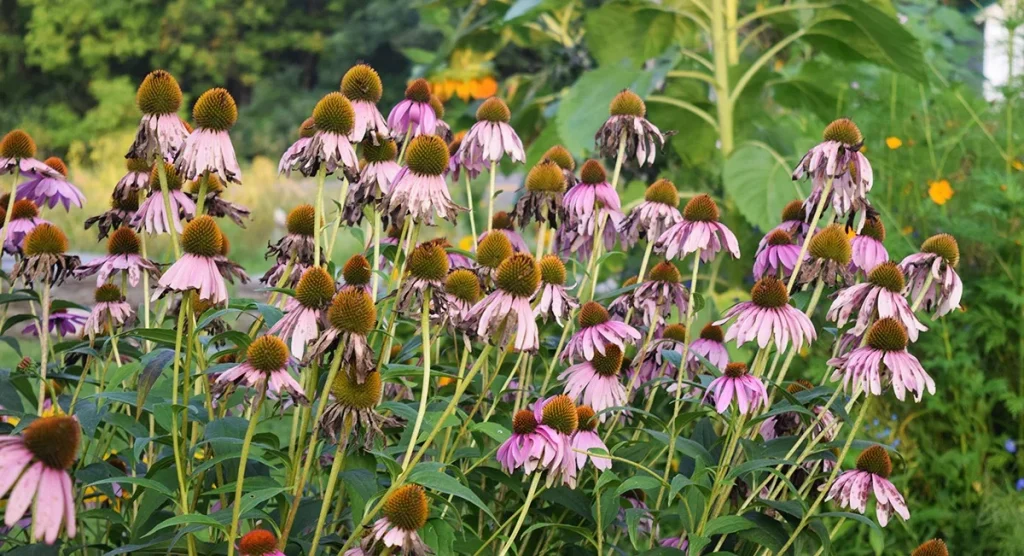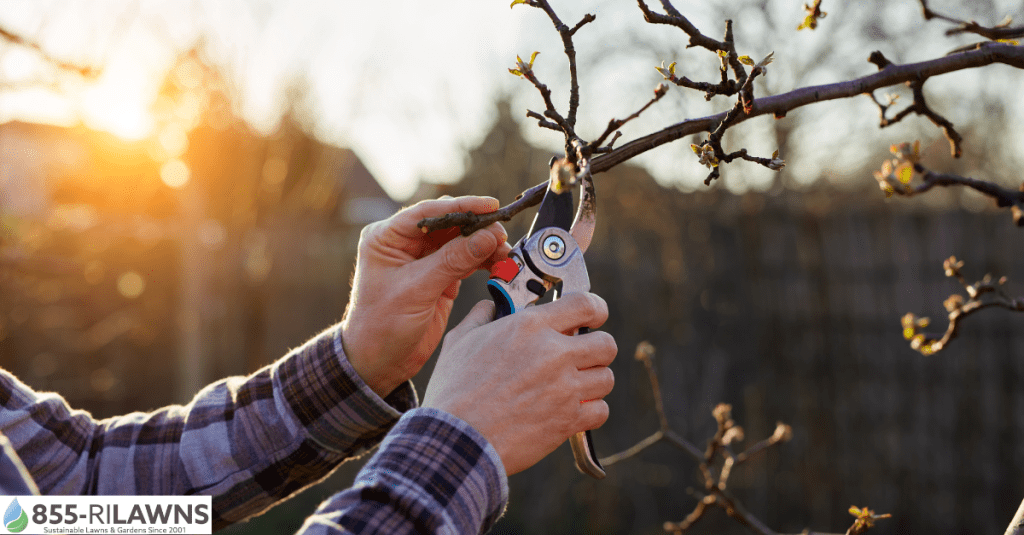Winter pruning benefits go beyond just trimming branches—they promote healthier trees and set the stage for strong spring growth. In Rhode Island, where forests cover 59% of the land, pruning in winter helps prevent pests and diseases, keeping your landscape thriving year-round.
In this blog, we’ll cover 5 key benefits of winter pruning in 2025.
5 Key Benefits of Winter Pruning
Let’s take a look at winter pruning benefits.

1. Enhanced Plant Health
Winter pruning strengthens trees by eliminating weak or infected branches.
- Prevents the spread of diseases and pests before they become a bigger issue.
- Reduces competition for nutrients, allowing healthy branches to thrive.
- Encourages better airflow and sunlight penetration for stronger growth.
2. Improved Structural Integrity
A well-pruned tree is less likely to suffer storm damage.
- Winter pruning exposes the tree’s framework, making it easier to identify weak or crossing branches.
- Helps shape young trees for a more balanced and sturdy structure.
- Reduces the risk of falling limbs that could cause property damage.
Learn more about winter pruning techniques to improve tree structure and prevent damage.
3. Stimulated Vigorous Spring Growth
Dormant pruning ensures your trees start spring with renewed energy.
- Directs resources to the strongest branches, leading to fuller, healthier growth.
- Encourages flowering and fruit production in many species.
- Prevents overgrowth that can weaken trees in the long run.
4. Minimized Risk of Disease Transmission
Cold weather slows down the spread of infections, making it the safest time to prune.
- Cuts heal faster with lower exposure to bacteria and fungi.
- Many pests are inactive in winter, reducing the risk of infestations.
- Prevents the need for excessive chemical treatments later in the year.
5. Cost-Effective Maintenance
Winter conditions make tree care more efficient and less disruptive.
- Frozen ground prevents heavy equipment from damaging soil and roots.
- Arborists have better access to trees, making large pruning jobs quicker and safer.
- Reduces emergency pruning costs by addressing potential hazards early.
What Happens When You Neglect Winter Pruning?
Neglecting winter pruning can lead to long-term damage and costly problems.

- Increased Disease & Pest Infestations: Dead and weak branches become breeding grounds for fungi, bacteria, and insects, spreading infections to healthy parts of the tree.
- Weaker Tree Structure: Without pruning, trees develop weak or overcrowded branches, making them more likely to snap during storms.
- Stunted Spring Growth: Overgrown or damaged branches drain nutrients, preventing new shoots from growing properly.
- Higher Maintenance Costs: Untrimmed trees require more corrective pruning later, which is often more expensive and labor-intensive.
- Safety Hazards: Weak branches can break unexpectedly, posing risks to people, property, and nearby power lines.
Final Thoughts
Now that you know the key winter pruning benefits, it’s time to take action. Pruning during dormancy keeps your trees healthy, prevents disease, and prepares them for strong spring growth.
Need expert help?
Our professional winter pruning services ensure your landscape stays in top shape. Connect with us on Facebook. Or contact us today to schedule a FREE consultation.
FAQs
Is it safe to prune all types of trees and shrubs in winter?
While many trees and shrubs benefit from winter pruning, some species, particularly those that flower in early spring, may have already set buds. Pruning these plants in winter could reduce their blooming potential.
Will winter pruning make my plants more susceptible to cold damage?
When done correctly, winter pruning does not increase susceptibility to cold damage. In fact, it can help plants conserve energy and direct resources to essential structures, promoting resilience during harsh weather.
Can I perform winter pruning myself, or should I hire a professional?
While minor pruning can often be done by homeowners, significant pruning tasks, especially on large trees or when dealing with disease issues, are best handled by professionals. They have the expertise and equipment to perform the job safely and effectively.


